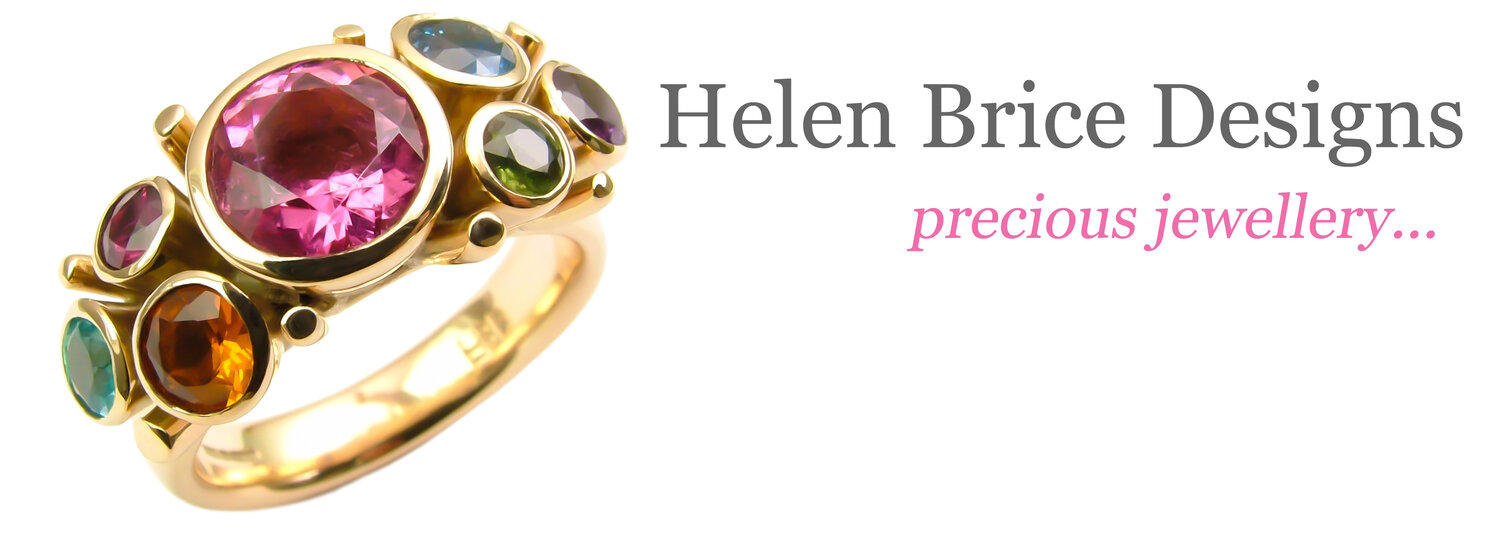Frequently asked questions…
How do I find out my ring size?
Ring sizes in the UK are measured from A-Z. You can request a plastic ring sizer here via the the contact page but it is more accurate to be measured professionally by a jeweller, either on your local high street, or by visiting me at one of the craft fairs or galleries I supply. Wider bands may require a larger size fitting so it is worth considering what type of ring you are looking for and using a similar shaped gauge. A well-fitting ring should slide on easily and come off with a bit of a wiggle.
Because our hands change size according to climate and hormones, it may be necessary to adjust the ring after it has been made. For some designs this is very easy, and others will require a lot more work depending if the ring needs to be made larger or smaller and if any of the gemstones may need to be removed to adjust the ring. If, having received your ring, you feel that you need to have it adjusted, please get in touch and I will be able to advise you.
*TIP* To reduce the likelihood of a ring needing to be resized it may be worth getting measured on a few different occasions preferably when your hands feel at a 'normal' temperature, or by measuring a ring which you regularly wear on that finger which you know to be a comfortable fit.
How does ‘Upcycling’ work?
To initiate the process of recycling your jewellery please contact Helen with some photos of what you have to work with, your approximate budget and an idea of the style of design you would like to have made. It is often easier to discuss this in person at a show, or to make an appointment so that Helen can accurately weigh and measure your materials and discuss what will be possible with the materials you have.
Helen will then work up some sketches of ideas and outline costs, which can be finalised before a piece is commissioned. The newly created piece will be fully hallmarked and Helen is happy to give an indication of Insurance value for your records.
Because of the extra time involved in designing and creating jewellery from recycled materials, please bear in mind that such commissions generally start from £500 and there are certain gemstones and metal types that Helen prefers to not work with, or that aren’t suitable for remodeling.
Helen will only make her own designs and not copies of other designers work. She does not undertake general remodeling or repairs.
What is Palladium?
Palladium is a very rare, naturally white metal. It is one of the Platinum group of metals which are particularly resistant to chemicals, do not tarnish and can be polished to a very high finish, making it ideal for wedding and engagement rings. Both Palladium and Platinum are also naturally hypoallergenic.
Whilst I still have some Palladium pieces in stock, because of it’s increased use in the car industry, the price has rocketed in recent years, making availability of Palladium bullion scarce. I cannot therefore currently offer Palladium to my clients, other than the pieces I currently hold in stock. Platinum is currently cheaper than Palladium (gram for gram) and is a superior metal which I would recommend for it’s naturally durable qualities if you are seeking a naturally white precious metal for your jewellery.
Is the jewellery plated?
No. All of my work is made from solid precious metal allowing the natural colours of the various gold carats, Platinum, Palladium & Silver to be seen as they are. Some commercial jewellers plate white metals such as white gold with Rhodium, but this fine plating has to be reapplied after just a few years and hides the true colour of the material beneath.
Are your diamonds conflict free?
Yes. All the gemstones I use come from UK suppliers who guarantee their sources are conflict free in compliance with United Nations Resolutions.
Do wedding and engagement rings need to be made from the same metal?
Rings which are to be worn alongside each other every day will rub over time and eventually wear away some of the metal. If they are of the same material, then they will wear evenly, but if one is much harder than the other (say Platinum next to 18ct white gold) then this will wear away the softer metal much faster. For this reason it is best to have wedding and engagement rings made from the same material. When combining mixed metal rings (say gold and silver stacking rings like my 'Infinity' or 'Galaxy' designs) it is better to have the silver for the bands and gold for any settings as gold is harder and so will protect the gemstones better over a long period of time.
How can I stop silver jewellery from tarnishing?
Sterling Silver jewellery forms an oxidised layer (tarnish) when it has come into contact with chemicals or grease and is not cleaned properly before storing. Silver jewellery that you wear everyday will keep a much better finish as you are constantly rubbing the surface with clothing/skin. Avoid spraying perfumes or cosmetics directly onto the surface of any jewellery and take silver items off to go swimming or when using household cleaners containing bleach. Always clean your jewellery with a silver polishing cloth before putting it back in your jewellery box.
*TIP* Jewellery which has become very tarnished can be cleaned with a silver cleaning solution or 'silver dip' which must be washed off thoroughly after use. Please check the instructions carefully before using as some gemstones may not be suitable and products vary.
Please also see my Terms & Conditions for information about delivery & returns
If you have any other questions or queries about the jewellery, ordering or commissioning, please use the contact form to get in touch.

